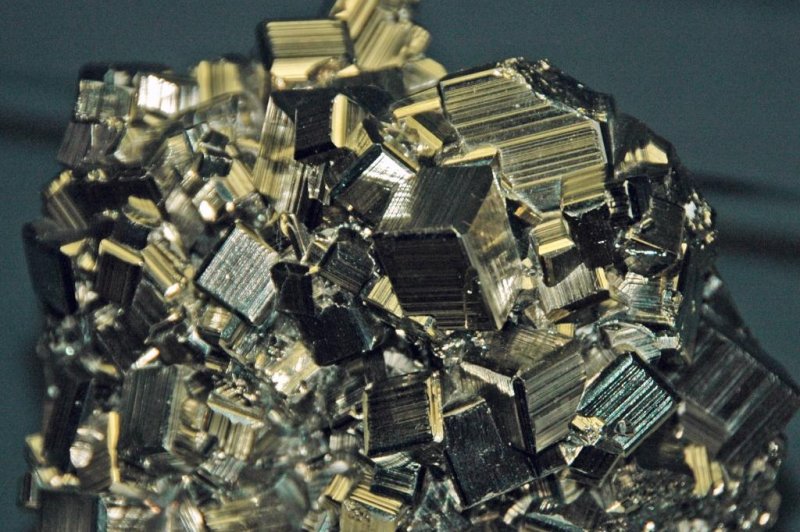
While pyrite may not be a good proxy for ancient oxygen levels, researchers suggest it can offer insights into local sea level changes and tectonic plate dynamics. Photo by John St. James/Flickr
Feb. 26 (UPI) -- When did Earth first acquire large amounts of oxygen? What did the planet's earliest microbial communities look like?
Many of the secrets of primordial Earth -- its climate conditions and biochemical composition -- are hidden in layers of marine sediments. To reconstruct Earth's past, scientists rely on certain chemical signatures preserved in the grains of sedimentary rocks.
Now, new research suggests at least one of those signatures, a mineral called pyrite, is unreliable as a proxy for ancient oxygen levels.
Pyrite, an iron sulfide formed in the presence of bacteria, operates as a strong control on oxygen accumulation in Earth's oceans and atmosphere, but it turns out that control is highly localized.
According to a new study, published Friday in the journal Science Advances, the relationship between sulfide formation and oxygen accumulation is dictated by local sedimentary processes.
The findings undermine the results of surveys using pyrite as a globally consistent proxy for ancient oxygen levels.
For the study, researchers drilled two boreholes: one along the shelf just off the eastern coast of New Zealand and another in the same ocean basin but a few hundred miles away, in the middle of the Pacific.
RELATED Experiment considers chemical composition of prehistoric ocean
"We were able to get a gradient of shallow to deep sediments and compare the differences between those isotopic compositions in pyrite between those sections," study co-author David Fike said in a press release.
"We demonstrate that, for this one basin in the open ocean, you get very different signals between shallow and deep water, which is prima facie evidence to argue that these signals aren't the global fingerprint of oxygen in the atmosphere," said Fike, a professor of Earth and planetary sciences at Washington University in St. Louis.
While pyrite may not be the best proxy for ancient oxygen levels, researchers suggest the mineral can offer unique insights local sea level changes and tectonic plate dynamics.
RELATED Scientists discover planet's oldest oxygen oasis
After drilling the boreholes, scientists compared the sulfur isotope ratios found in pyrite sampled throughout the sedimentary rock.
They analysis showed pyrite formation in the borehole drilled close to shore was strongly influenced by sea level-driven changes in local sedimentation process. In the borehole drilled in the deep ocean, pyrite formation was unaffected by changes in sea level.
"There is a water depth threshold," said co-author Roger Bryant, who earned his postdoctoral degree while working in Fike's laboratory but now works as a postdoctoral fellow at the University of Chicago. "Once you go below that water depth, sulfur isotopes apparently are not sensitive to things like climate and environmental conditions in the surface environment."
Fike notes that "the Earth is a complicated place," and said it is important to recall this when attempting to reconstruct its changes over time based on current observations.
"There are a number of different processes that impact the kinds of signals that get preserved. As we try to better understand Earth's long-term evolution, we need to have a more nuanced view about how to extract information from those signals," Fike said.
upi.com/7078633
No comments:
Post a Comment